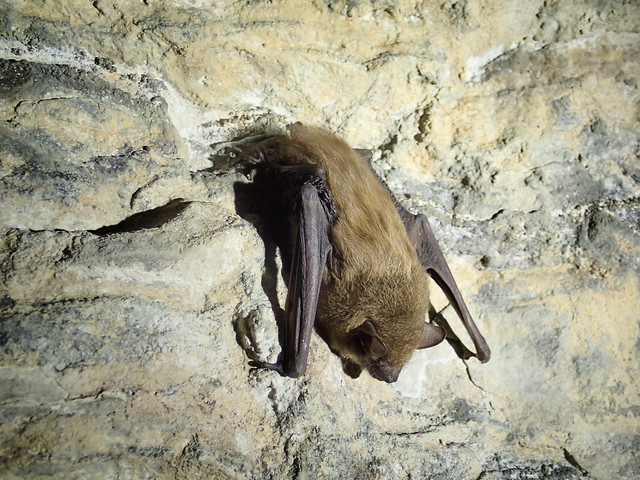Read Our Blogs
Bat Week
Each year, Bat Week brings attention to the importance of bats in our ecosystems and the crucial need for bat conservation. Bats across the world face threats, from the destruction of their habit to deadly diseases. Bat Week, Oct.24-31, 2024, celebrates these amazing animals and raises awareness about these awesome and often misunderstood creatures' issues. Virginia State Parks have many learning opportunities at upcoming events.

Eastern Small-footed Bat (Myotis leibii) at Grayson Highlands State Park. Photo by Amelia Hulth.
Why are bats important?
They eat bugs!
Bats play a huge role in the population control of mosquitoes and other insects. An average bat eats up to 3,000 insects a night—nearly their body weight each day!
This helps us reduce the spread of mosquito-borne disease and the need to treat many of our crops with harmful pesticides.
They're also major pollinators.
In species around the world, fruit and nectar are primary food sources for bats. By feeding on fruit and the nectar of flowers, bats help spread seeds and pollinate plants, which allows new plants to grow!

Big Brown Bat clinging to a mortar wall. Photo by Wil Orndorff.
What bats can I expect to find in Virginia?
Generally, bats are divided into two categories, and which kind you're likely to encounter depends on where you are.
Cave Bats hibernate and rest in caves—Virginia has a bunch of caves throughout the Appalachian range, so these bats are typically found there. Common cave bats include the Little Brown bat, the Big Brown Bat and the Small-footed bat.
Tree Bats hibernate and rest in tree hollows and beneath tree bark, under dead and downed trees and even in dark, undisturbed manmade structures like an attic or an abandoned building. These bats live all over the state and migrate south for winter. Common Tree Bats in Virginia are the Silver-haired Bat, the Evening Bat and the Eastern Red Bat.
Virginia has a state bat, too—the Virginia Big-eared bat. Unfortunately, it's a federally endangered species and only known to roost in a handful of counties west of I-81.

Virginia's state bat, the Virginia Big-eared Bat. Photo by JH Fagan.
What is threatening bat populations?
White-nose syndrome is a fungal disease that eats away at a bat's exposed skin and causes severe discomfort. As a result, affected bats are more active during the daytime and winter months when their food sources aren't as readily available—these bats are unable to keep up with their caloric needs, and many starve. The higher activity levels also contribute to the further bat-to-bat spread of the disease.
An older threat to bat populations, but no less dangerous, is continued habitat encroachment and destruction by people. Every acre of development for manmade infrastructure is one less acre of habitat for native species. Some bats have adapted to manmade environments, like the Evening Bat, but the loss of habitat is always detrimental to the ecosystem at large.
What can we do to help?
Remember to respect bats in their natural environment and avoid disturbing them. Help preserve bat habitats and limit access to them when possible. You can attract bats to your backyard by providing food, water, and shelter, even in small spaces. In return, insectivorous bats will help control unwanted yard and garden pests.
Building bat boxes is also another great way to ensure that bats have a designated safe space to rest.
To learn more about bats and what we can do to help, check out these great resources:
- Bat Week is an annual international celebration of the role of bats in nature
- A Guide to the Bats of Virginia by the Department of Wildlife Resources
- Bats Live and project EduBat bringing bat conservation to life through webcasts, webinars, and online education resources
If you have read the article and have a question, please email nancy.heltman@dcr.virginia.gov.














